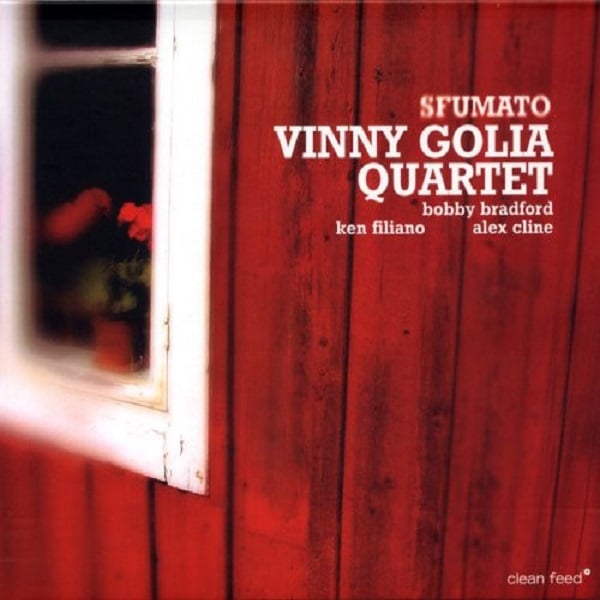
Vinny Golia Quartet
Personnel:
Alex Cline (d), Bobby Bradford (t), Ken Filiano (b), Vinny Golia (sax),
Also Available on iTunes
€ 8.90
Here is an item in Vinny Golia’s discography that gives a global sense to his life as an artist. Before being a musician, Golia was a painter. A very particular one, trying to translate to color what he heard in the music he liked most, from Varèse and Messiaen to John Coltrane and Ornette Coleman. In his youth, he used to go to jazz concerts in his native New York to sketch the performers, based in what he saw but also in the music itself. His growing interest in what was happening sound wise made him turn to music definitely, first picking the soprano saxophone and then all the members of the instrumental family invented by Adolph Sax, from the sopranino to the contrabass, an arsenal soon extended to other reeds – all the clarinets, the bassoon and the english horn, but also flutes and ethnic woodwinds from several geographic origins. And he learned to master all those instruments by himself, only taking some basic lessons from his heroes, like Anthony Braxton. The curious thing is that if his painting was inspired by music (he “played” some painting gigs in real time, along with improvising musicians), the music he’s performing and recording for 30 years now is informed by some of the visual arts main characteristics, sounds functioning like colours. “Sfumato”, the new album of his quartet with the legendary trumpeter Bobby Bradford, bassist Ken Filiano and drummer Alex Cline, is a direct reference to that visual background, alluding to the painting technique developed by Leonardo da Vinci to create the perception of depth and volume. The famous Mona Lisa is a consequence of that proceeding, and so is this magnificent record. But take notice: “Sfumato” isn’t the typical “painting-turn-to-music” creation of the experimental sound art field: Golia’s option for the audio medium made him a musician and not a sound sculptor. As such, he deals entirely with the formal elements that make music what it is historically, and even if he has an innovative approach, tonal / melodic phrasing and groovy poly-rhythmic sustenance is something he praises much. That’s why he’s also a composer in the traditional sense, dealing with counterpoint or cadenzas, even when a bit bizarre and broken. With Bradford, Filiano and Cline he can apply something analogous to the sfumato resources to the music they play here, but it’s not brush work what they’re doing.
More music that may interest you